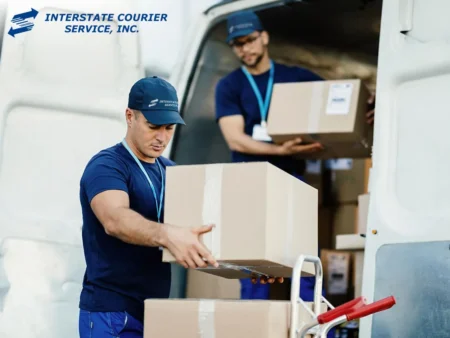
The “last mile” in logistics refers to the final leg of a delivery journey, where a package is transported from a distribution center to its final destination. This stage is notoriously complex and costly, often representing a significant portion of the total delivery expense. In Tampa, as in many urban areas, courier services face unique challenges and opportunities in solving the last-mile puzzle. This article delves into these challenges and explores innovative solutions courier services implement to streamline last-mile delivery.
One of the primary challenges in last-mile delivery is the sheer unpredictability of the urban environment. Traffic congestion, limited parking, and narrow streets can all impede the timely delivery of goods. These issues are exacerbated in Tampa, where the urban landscape is a mix of densely populated neighborhoods and sprawling suburbs. Courier services must navigate these obstacles while maintaining efficiency and keeping costs low. Additionally, the rise of e-commerce has increased the volume of packages that need to be delivered, putting further strain on last-mile logistics.
Customer expectations also play a significant role in shaping last-mile delivery challenges. Today’s consumers demand fast, reliable, and transparent delivery services. They expect real-time tracking and accurate delivery windows, adding pressure on courier services to enhance their technological capabilities. Meeting these expectations requires advanced logistics software, effective route planning, and real-time communication.
To address these challenges, courier services are adopting several innovative solutions. One such solution is the use of advanced routing algorithms. These algorithms analyze traffic patterns, weather conditions, and historical data to optimize delivery routes. Courier services can ensure faster and more reliable deliveries by predicting and avoiding potential delays. For instance, during Tampa’s busy tourist seasons or major events, these algorithms can reroute deliveries to avoid congested areas, ensuring packages arrive on time.
Another promising solution is the use of alternative delivery methods. Bicycle couriers and electric scooters are becoming increasingly popular in Tampa for last-mile deliveries. These eco-friendly options can efficiently navigate traffic and access areas that are difficult for traditional delivery vans. By reducing reliance on larger vehicles, courier services can decrease carbon footprint and improve delivery times in congested urban areas.
Drones and autonomous vehicles are also explored as potential solutions for last-mile delivery. While regulatory hurdles and technological limitations still exist, using drones to deliver small packages could revolutionize the industry. Autonomous vehicles, on the other hand, can operate around the clock, reducing delivery times and labor costs. Tampa’s relatively flat terrain and favorable weather conditions make it an ideal testing ground for these innovations.
Collaboration between services and local businesses is another effective strategy for improving last-mile delivery. By partnering with local stores and warehouses, courier services can establish micro-distribution centers closer to customers. This reduces the distance packages need to travel, speeding up delivery times and lowering costs. In Tampa, where the real estate market is thriving, finding suitable locations for these micro-distribution centers is more feasible than in denser cities.
Courier services are also leveraging technology to enhance customer experience and satisfaction. Real-time tracking systems and mobile apps allow customers to monitor their packages and receive updates on delivery status. Some services even implement predictive delivery windows, giving customers a more accurate estimate of when their packages will arrive. This transparency and reliability help build trust and loyalty among customers.
Solving the last-mile puzzle in logistics requires a multifaceted approach that combines technology, innovation, and collaboration. In Tampa, courier services like those provided by Interstate Courier Services are rising to the challenge by adopting advanced routing algorithms, exploring alternative delivery methods, and enhancing customer experience through technology. As these solutions evolve, the future of last-mile delivery looks promising, paving the way for faster, more efficient, and sustainable logistics in urban environments.
Picture Credit: Freepik



